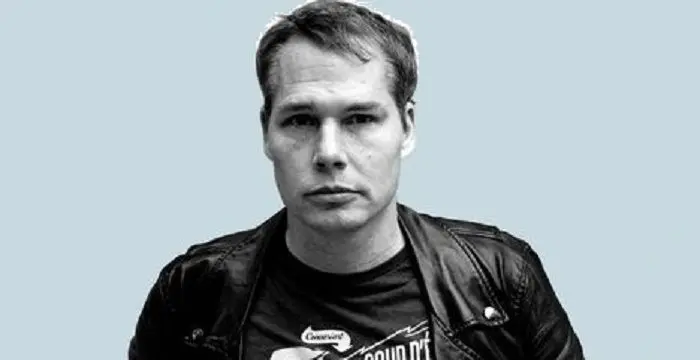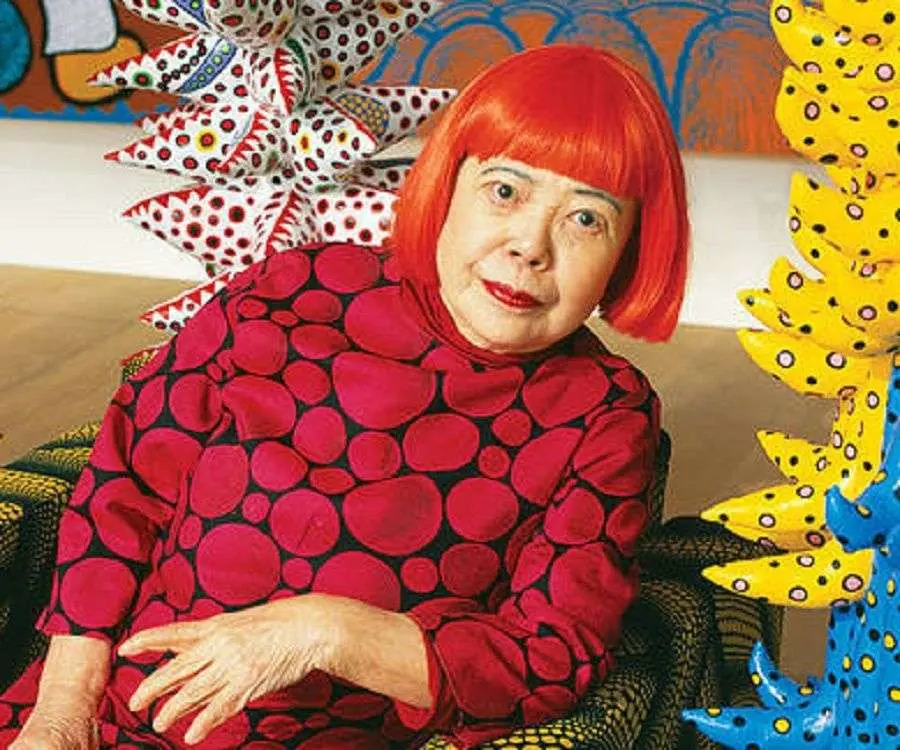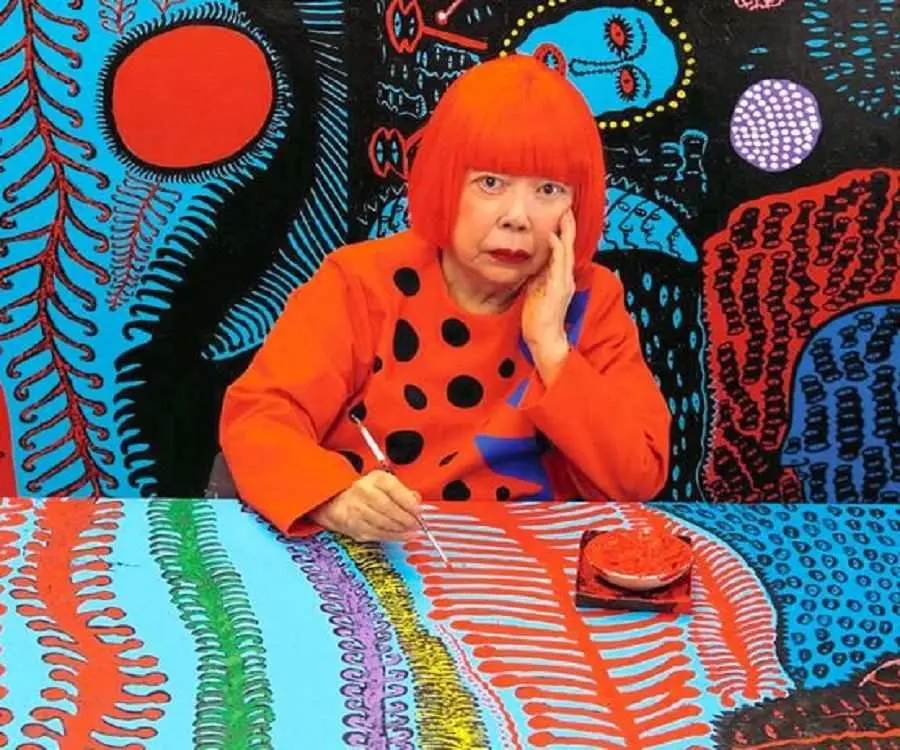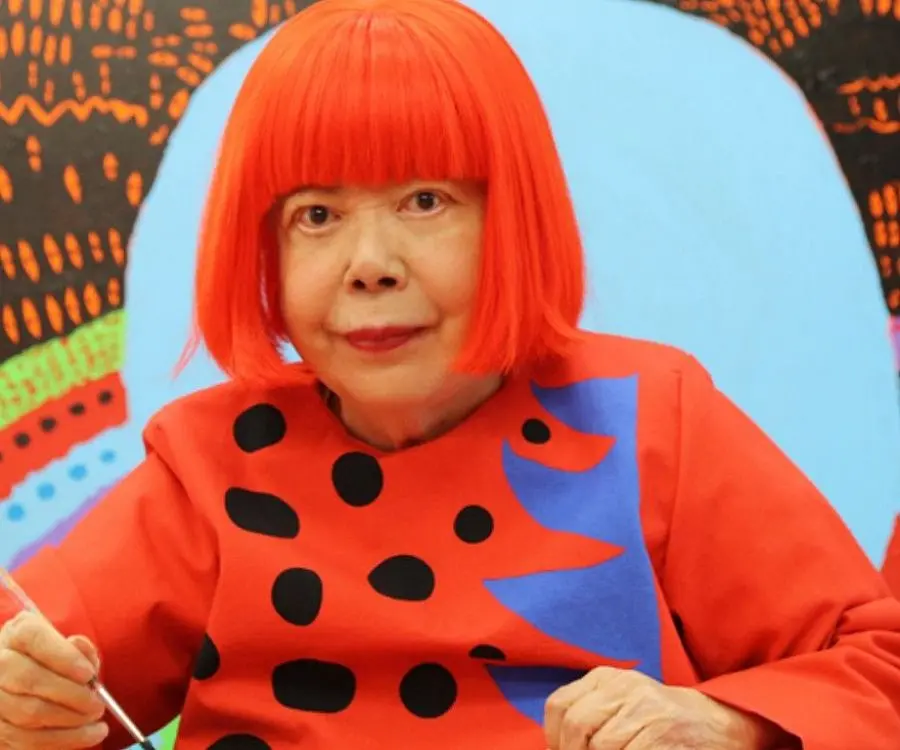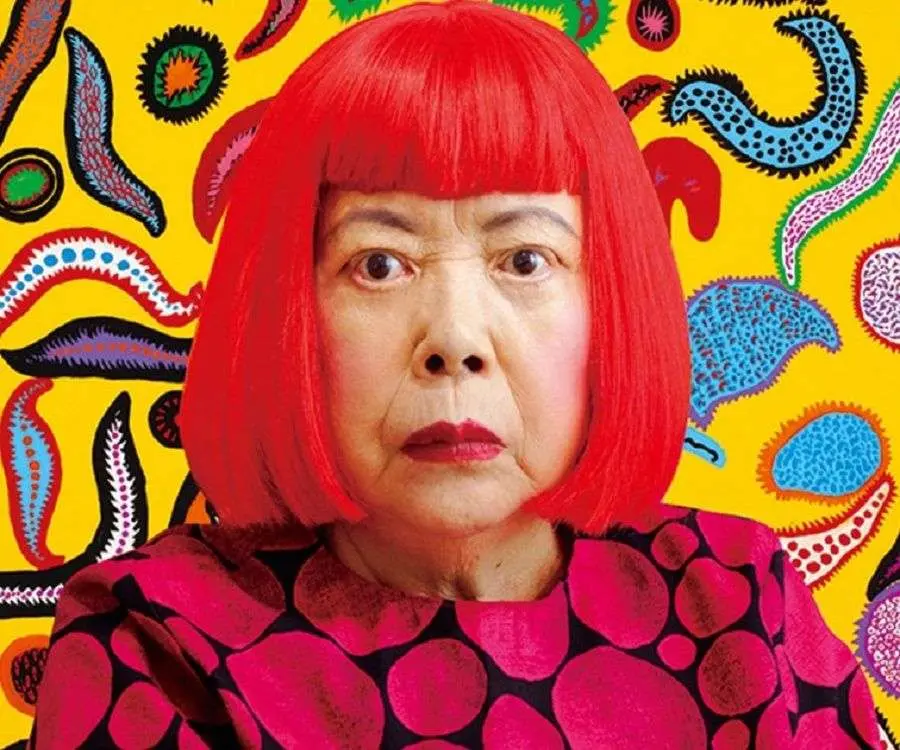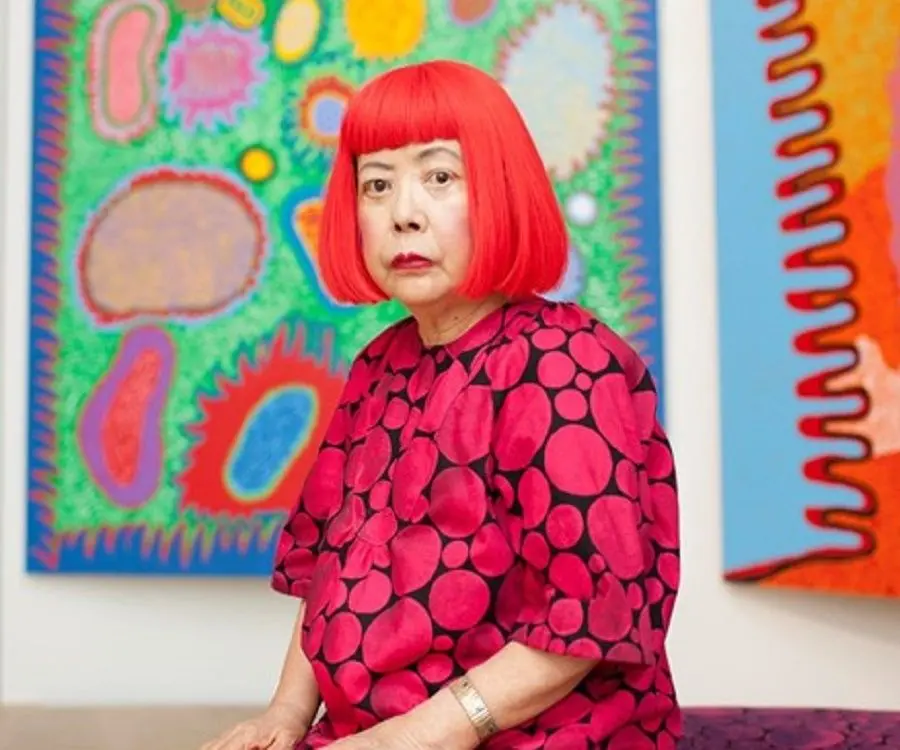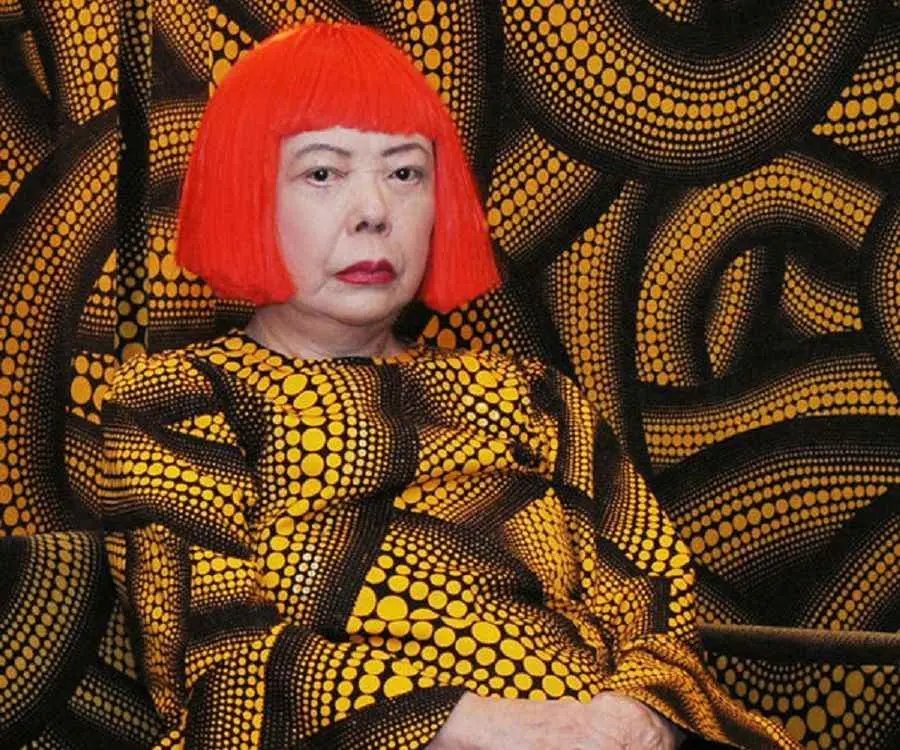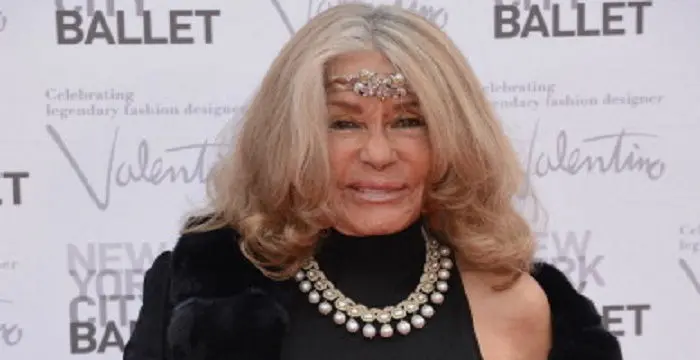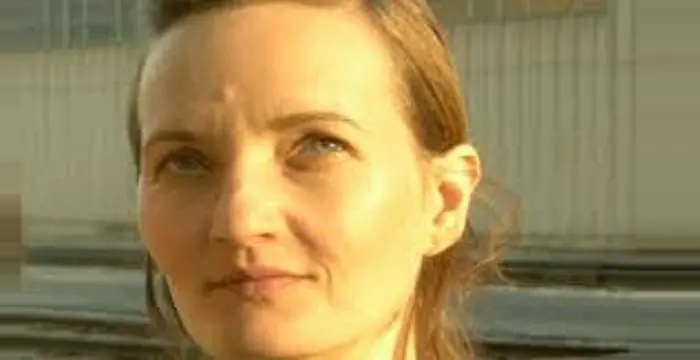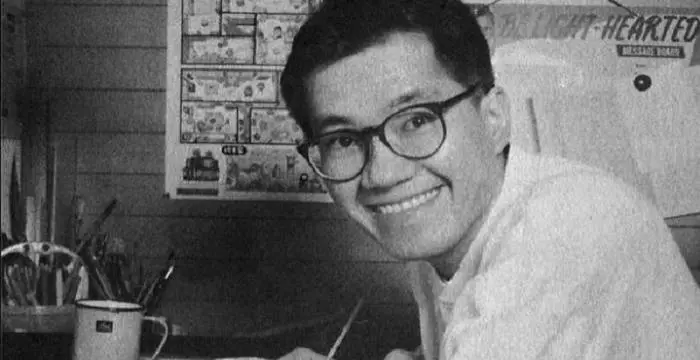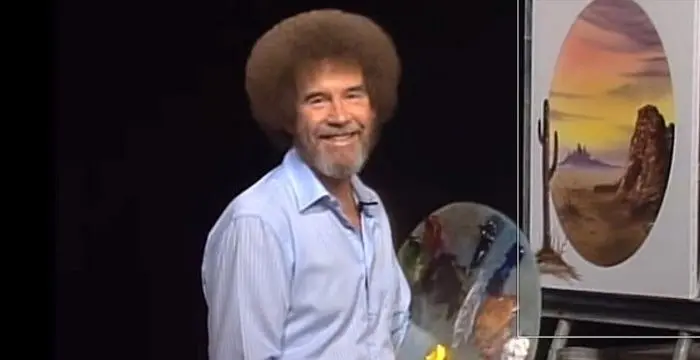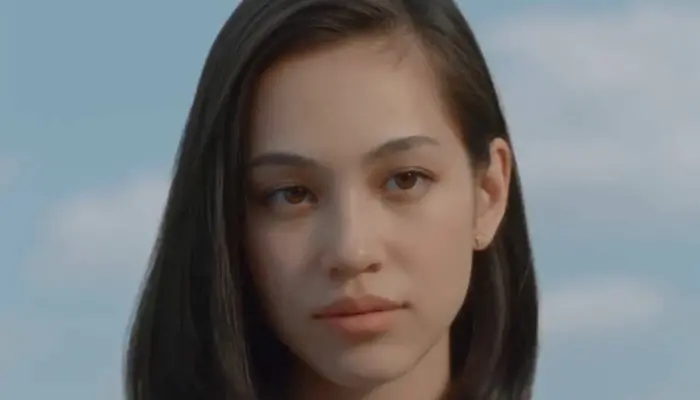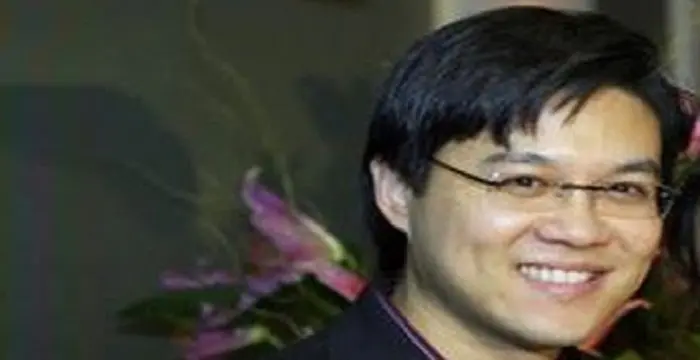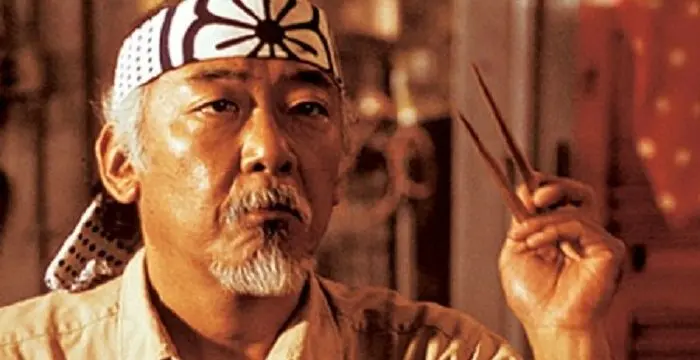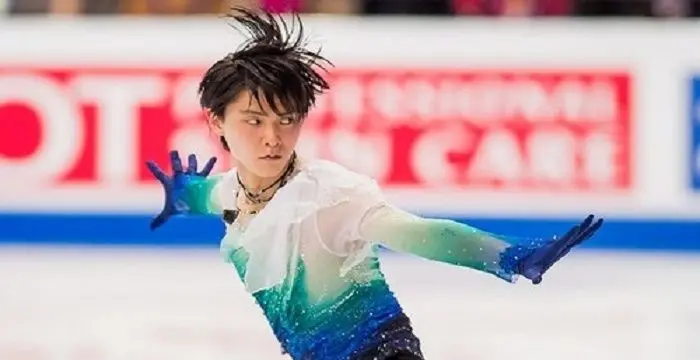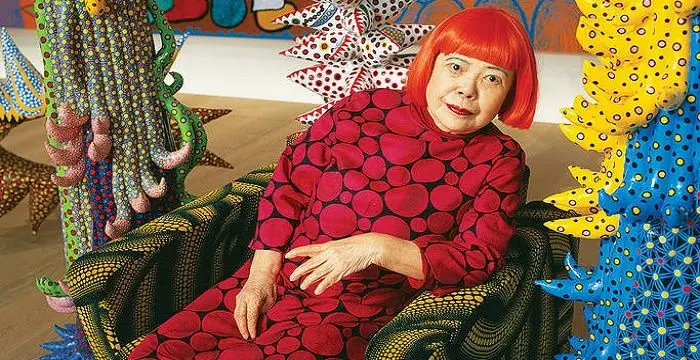
Yayoi Kusama - Contemporary Artist, Birthday and Life
Yayoi Kusama's Personal Details
Yayoi Kusama is a Japanese contemporary artists
| Information | Detail |
|---|---|
| Birthday | March 22, 1929 |
| Nationality | Japanese |
| Famous | Artists & Painters, Artists, Contemporary Artist |
| Universities |
|
| Birth Place | Matsumoto, Nagano Prefecture |
| Gender | Female |
| Sun Sign | Aries |
| Born in | Matsumoto, Nagano Prefecture |
| Famous as | Contemporary Artist |
// Famous Contemporary Artist
Shepard Fairey
Shepard Fairey is American street artist and graphic designer best known for his Barack Obama "Hope" poster. This biography of Shepard Fairey provides detailed information about his childhood, life, achievements, works & timeline
Yayoi Kusama's photo
Who is Yayoi Kusama?
Yayoi Kusama is a renowned Japanese-American contemporary artist. Her primarily conceptual art displays elements of feminism, surrealism, minimalism, pop art, abstract expressionism infused with content that is psychological, often autobiographical, and sexual. Acknowledged as one of the most important Japanese living artists, she was trained in the traditional Japanese art style of ‘Nihonga’ but soon experimented with abstraction, and after moving to the United States, involved herself in pop art. Moving in the avant-garde society, she developed her signature motifs of dots, indulged in soft sculpture, created dramatic installation works, and staged performance-based events. She came into public attention after organizing a series of performances that featured naked participants painted with brightly colored polka dots. Kusama has also been widely appreciated for using mirrors in her installations that served to transform her earlier works featuring intense repetition into an immersive experience. She has attained a cult status also as a novelist. The first Japanese woman representative at the Venice Biennale, she has also been named by the ‘Time’ magazine as one of the most influential people in the world.
// Famous Artists & Painters
Micheline Roquebrune
Micheline Roquebrune is a petite Moroccan-French painter best known as the third wife the legendary Scottish actor Sir Sean Connery. Check out this biography to know about her birthday, childhood, family life, achievements and fun facts about her.
Yvonne McGuinness
Yvonne McGuinness is an Irish multimedia artist. This biography profiles her childhood, family, personal life, career, etc.
Akira Toriyama
Akira Toriyama is a Japanese manga artist. This biography profiles his childhood, family, personal life, achievements, etc.
Childhood & Early Life
Yayoi Kusama was born on March 22, 1929, into an affluent merchant family in Matsumoto, Nagano, Japan. Her family life was disturbed as her father was a womanizer who wanted nothing to do with his wife, and her mother was temperamental and physically abusive to her.
With her mother instructing her to spy on her father’s dalliances, she developed a deep-rooted contempt for male sexuality and an aversion to sex that would make a lasting impact on her art.
At the age of 13, Kusama went to work in a defense factory where she sewed parachutes for the Japanese army engaged in the Second World War, which influenced her greatly and opened her eyes to the concepts of personal and creative liberty.
In 1948, despite her parents’ opposition, she enrolled at the Kyoto Municipal School of Arts and Crafts, where she learned the traditional ‘Nihonga’ painting style of Japan. However, frustrated with the restrictions of the style, she expressed interest in the European and American avant-garde, and participated in several painting exhibitions in Tokyo, Kyoto, Osaka, and Matsumoto.
Career
By 1950, Yayoi Kusama had already developed her own distinctive style depicting natural forms in abstraction in watercolor, oil, and gouache, principally on paper. She also commenced using her trademark polka dots on virtually every surface that she could find; floors, walls, canvases, and later household objects, and even on the bodies of nude assistants.
In 1955, she participated in the ‘International Watercolor Exhibition: 18th Biennial’ at the Brooklyn Museum in New York. Attracted by the creative environment in America, she engaged in correspondence with Georgia O’Keeffe, a leading American modernist painter, asking for advice whether she should move to America to pursue her artistic career.
In 1957, at the age of 27, she emigrated to the United States of America and arrived in Seattle, where she had her first American solo exhibition of her paintings at the ‘Zoe Dusanne Gallery’.
In 1958, she moved to New York City, where in 1959, she had a solo exhibition at the ‘Brata Gallery’. Her creation, ‘Infinity Nets’, especially, received very good reviews, including one by Donald Judd, who was an art critic before he became an artist.
In 1960, Kusama participated in her first European exhibition, ‘Monochrome Malerei’ that was held at the ‘Städtisches Museum Schloss Morsbroich’, a museum of modern art in Leverkusen, Germany.
Kusama shifted her studio to the same building where Donald Judd and Eva Hesse worked. Already good friends with Judd, she also became very close to Hesse.
Kusama began painting household furniture like chairs, ladders, and even shoes with white phallic protrusions that created a sensation. She participated in one of the first pop art exhibitions at New York’s ‘Green Gallery’ along with Claes Oldenburg and Andy Warhol. She also exhibited ‘Infinity Nets’ at the ‘Stedelijk Museum’, Amsterdam in the exhibition ‘Nul’.
Despite having a prodigious output, she found it very difficult to make her art profitable and had to be regularly hospitalized due to exhaustion from overwork and long-standing complaint of hallucinations.
In 1963, Kusama exhibited her first installation, ‘Aggregation: One Thousand Boats Show’ in New York’s ‘Gertrude Stein Gallery’. The next year, she created a sensation at the New York’s ‘Richard Castellane Gallery‘ with her ‘Driving Image Show’ featuring objects and the floor covered with macaroni.
Kusama showed her first mirror installation in 1965 at the ‘Richard Castellane Gallery’ with ‘Infinity Mirror Room – Phalli’s Field’ that experimented with mirrored surfaces and light to create the illusion of a never-ending space. She also had her first solo show in Europe when she organized ‘The Inner and Outer Space’ at Stockholm’s ‘Moderna Museet’.
Kusama participated in the celebrated ‘Venice Biennale’ for the first time in 1966 in its 33rd edition with her ‘Narcissus Garden’ featuring countless mirrored balls.
The Hippie movement and the other protest movements of those times also influenced Kusuma, who started organizing body paint festivals and public happenings in New York, many of which, involved nudity during 1967-68 to protest against the American involvement in the Vietnam War. Her film, ‘Kusama’s Self-Obliteration’ won a number of awards at several experimental film festivals.
Most of her public events were geared to attract the maximum publicity, an exceptional example being the ‘Grand Orgy to Awaken the Dead’ held in 1960 at the ‘Sculpture Garden’ of the ‘Museum of Modern Art’ that featured nude performers posing in classical statuary stances in the fountain.
She went to Tokyo in 1970 and organized a nude happening for which, she was promptly arrested. After spending just three months in Japan, she returned to America. However, in 1973, an ailing Kusama returned, this time for good.
Kusama began writing short stories, novels with shocking instinctual content and surrealistic themes, and poetry. She also tried her hand at dealing in art, however, the venture failed in a few years.
In 1977, convinced that she was mentally unwell, she got herself admitted into the ‘Seiwa Hospital for the Mentally Ill’ in Tokyo, where she lives even now.
Yayoi Kusama’s new large paintings and sculptures were exhibited in 1982 at the ‘Fuji Television Gallery’ in Tokyo and she also had a solo exhibition the same year in ‘Naviglio Gallery’ in Milan that marked her return to a European gallery after a long gap.
Because of her relocation to Japan, she had been more or less forgotten as an artist in the United States until there was a resurgence of interest in her works following several exhibitions of retrospectives, the first of which, took place in 1989, at the ‘Center for International Contemporary Arts’ in New York.
She represented Japan in 1993, at the ‘Venice Biennale’ with selected works covering her entire artistic career.
During the period 1995–98, Kusama participated in a number of international exhibitions in which, she showed both new creations and retrospectives.
In the new millennium, Matsumoto, Kusama’s hometown, hosted a retrospective, in which, nearly 300 of her works were shown. ‘Infinity Net’, her autobiography in Japanese was also published.
In 2004, the ‘Mori Art Museum’ in Tokyo hosted her exhibition, ‘Kusamatrix’ that also included ‘Dots Obsession’, a large room installation. In 2009, she commenced work on a series of 100 large canvases, ‘My Eternal Soul’.
In 2011, a large retrospective of her works was shown first at the ‘Museo Reina Sofia’ in Madrid and then at the ‘Centre Pompidou’ in Paris, after which, in the following year, it travelled to the ‘Tate Modern’, and concluded at the at the ‘Whitney Museum of American Art’ in New York.
In 2017, the ‘Hirshhorn Museum’ in Washington organized a retrospective of her works in the last 50 years that will travel to five more museums in American and Canada. The ‘Yayoi Kusama Museum’ opened in Tokyo the same year.
Major Works
Accumulation No.1’ (1962) is Kusama’s first attempt to transform furniture into objects with sexual themes.
Infinity Mirror Room – Phalli’s Field’ (1965) was the first experiment with mirrors and lights to explore concepts of space.
‘Pumpkin’ (1994) represents her first attempt to create outdoor sculpture.
// Famous Artists
Susan Mikula
Susan Mikula is an American artist and photographer. Check out this biography to know about her childhood, family life, achievements and fun factsabout her life.
Akira Toriyama
Akira Toriyama is a Japanese manga artist. This biography profiles his childhood, family, personal life, achievements, etc.
Bob Ross
Bob Ross was a celebrated, creative American painter and an art instructor. Check out this biography to know about his birthday, childhood, family life, achievements and fun facts about him.
Yayoi Kusama's awards
| Year | Name | Award |
|---|---|---|
Other | ||
| 0 | Order of the Rising Sun | |
| 0 | 4th class | |
| 0 | Praemium Imperiale | |
| 0 | Women's Caucus for Art Lifetime Achievement Award | |
Yayoi Kusama biography timelines
- // 22nd Mar 1929Yayoi Kusama was born on March 22, 1929, into an affluent merchant family in Matsumoto, Nagano, Japan. Her family life was disturbed as her father was a womanizer who wanted nothing to do with his wife, and her mother was temperamental and physically abusive to her.
- // 1948In 1948, despite her parents’ opposition, she enrolled at the Kyoto Municipal School of Arts and Crafts, where she learned the traditional ‘Nihonga’ painting style of Japan. However, frustrated with the restrictions of the style, she expressed interest in the European and American avant-garde, and participated in several painting exhibitions in Tokyo, Kyoto, Osaka, and Matsumoto.
- // 1950By 1950, Yayoi Kusama had already developed her own distinctive style depicting natural forms in abstraction in watercolor, oil, and gouache, principally on paper. She also commenced using her trademark polka dots on virtually every surface that she could find; floors, walls, canvases, and later household objects, and even on the bodies of nude assistants.
- // 1955In 1955, she participated in the ‘International Watercolor Exhibition: 18th Biennial’ at the Brooklyn Museum in New York. Attracted by the creative environment in America, she engaged in correspondence with Georgia O’Keeffe, a leading American modernist painter, asking for advice whether she should move to America to pursue her artistic career.
- // 1957In 1957, at the age of 27, she emigrated to the United States of America and arrived in Seattle, where she had her first American solo exhibition of her paintings at the ‘Zoe Dusanne Gallery’.
- // 1958 To 1959In 1958, she moved to New York City, where in 1959, she had a solo exhibition at the ‘Brata Gallery’. Her creation, ‘Infinity Nets’, especially, received very good reviews, including one by Donald Judd, who was an art critic before he became an artist.
- // 1960In 1960, Kusama participated in her first European exhibition, ‘Monochrome Malerei’ that was held at the ‘Städtisches Museum Schloss Morsbroich’, a museum of modern art in Leverkusen, Germany.
- // 1960Most of her public events were geared to attract the maximum publicity, an exceptional example being the ‘Grand Orgy to Awaken the Dead’ held in 1960 at the ‘Sculpture Garden’ of the ‘Museum of Modern Art’ that featured nude performers posing in classical statuary stances in the fountain.
- // 1962Accumulation No.1’ (1962) is Kusama’s first attempt to transform furniture into objects with sexual themes.
- // 1963In 1963, Kusama exhibited her first installation, ‘Aggregation: One Thousand Boats Show’ in New York’s ‘Gertrude Stein Gallery’. The next year, she created a sensation at the New York’s ‘Richard Castellane Gallery‘ with her ‘Driving Image Show’ featuring objects and the floor covered with macaroni.
- // 1965Kusama showed her first mirror installation in 1965 at the ‘Richard Castellane Gallery’ with ‘Infinity Mirror Room – Phalli’s Field’ that experimented with mirrored surfaces and light to create the illusion of a never-ending space. She also had her first solo show in Europe when she organized ‘The Inner and Outer Space’ at Stockholm’s ‘Moderna Museet’.
- // 1965Infinity Mirror Room – Phalli’s Field’ (1965) was the first experiment with mirrors and lights to explore concepts of space.
- // 1966Kusama participated in the celebrated ‘Venice Biennale’ for the first time in 1966 in its 33rd edition with her ‘Narcissus Garden’ featuring countless mirrored balls.
- // 1967 To 1968The Hippie movement and the other protest movements of those times also influenced Kusuma, who started organizing body paint festivals and public happenings in New York, many of which, involved nudity during 1967-68 to protest against the American involvement in the Vietnam War. Her film, ‘Kusama’s Self-Obliteration’ won a number of awards at several experimental film festivals.
- // 1970 To 1973She went to Tokyo in 1970 and organized a nude happening for which, she was promptly arrested. After spending just three months in Japan, she returned to America. However, in 1973, an ailing Kusama returned, this time for good.
- // 1977In 1977, convinced that she was mentally unwell, she got herself admitted into the ‘Seiwa Hospital for the Mentally Ill’ in Tokyo, where she lives even now.
- // 1982Yayoi Kusama’s new large paintings and sculptures were exhibited in 1982 at the ‘Fuji Television Gallery’ in Tokyo and she also had a solo exhibition the same year in ‘Naviglio Gallery’ in Milan that marked her return to a European gallery after a long gap.
- // 1989Because of her relocation to Japan, she had been more or less forgotten as an artist in the United States until there was a resurgence of interest in her works following several exhibitions of retrospectives, the first of which, took place in 1989, at the ‘Center for International Contemporary Arts’ in New York.
- // 1993She represented Japan in 1993, at the ‘Venice Biennale’ with selected works covering her entire artistic career.
- // 1994‘Pumpkin’ (1994) represents her first attempt to create outdoor sculpture.
- // 1995 To 1998During the period 1995–98, Kusama participated in a number of international exhibitions in which, she showed both new creations and retrospectives.
- // 2004 To 2009In 2004, the ‘Mori Art Museum’ in Tokyo hosted her exhibition, ‘Kusamatrix’ that also included ‘Dots Obsession’, a large room installation. In 2009, she commenced work on a series of 100 large canvases, ‘My Eternal Soul’.
- // 2011In 2011, a large retrospective of her works was shown first at the ‘Museo Reina Sofia’ in Madrid and then at the ‘Centre Pompidou’ in Paris, after which, in the following year, it travelled to the ‘Tate Modern’, and concluded at the at the ‘Whitney Museum of American Art’ in New York.
- // 2017In 2017, the ‘Hirshhorn Museum’ in Washington organized a retrospective of her works in the last 50 years that will travel to five more museums in American and Canada. The ‘Yayoi Kusama Museum’ opened in Tokyo the same year.
// Famous Japanese peoples
Akira Toriyama
Akira Toriyama is a Japanese manga artist. This biography profiles his childhood, family, personal life, achievements, etc.
Kiko Mizuhara
Kiko Mizuhara (Audrie Kiko Daniel) is an American-Japanese actress, model, and designer. This biography provides detailed information about her childhood, family, personal life, career, etc.
Robert Charles Chien
Robert Charles Chien is an entrepreneur who is married to actress Lea Salonga. Check out this biography to know about his birthday, childhood, family life, achievements and fun facts about him.
Pat Morita
Pat Morita, born as Noriyuki Morita, was an American actor and comedian. Check out this biography to know about his childhood, family life, achievements and fun facts about him.
Mutsuhiro Watanabe
Mutsuhiro Watanabe was an Imperial Japanese Army corporal in the Second World War. Check out this biography to know about his childhood, family life, achievements and other facts about him.
Yuzuru Hanyu
Yuzuru Hanyu is a Japanese figure skater. Check out this biography to know about his childhood, family life, achievements and fun facts about him.
Yayoi Kusama's FAQ
What is Yayoi Kusama birthday?
Yayoi Kusama was born at 1929-03-22
Where is Yayoi Kusama's birth place?
Yayoi Kusama was born in Matsumoto, Nagano Prefecture
What is Yayoi Kusama nationalities?
Yayoi Kusama's nationalities is Japanese
What was Yayoi Kusama universities?
Yayoi Kusama studied at Kyoto City University of Arts
What is Yayoi Kusama's sun sign?
Yayoi Kusama is Aries
How famous is Yayoi Kusama?
Yayoi Kusama is famouse as Contemporary Artist
